|
|
|
Daedalus Books

|
This is a Peabody Award-winning guide to what's happening in pop culture and the arts, Studio 360 is produced by Public Radio International and WNYC. Hosted by novelist and journalist Kurt Andersen, the show is broadcast on 140 stations, and is heard by 500,000 listeners each week. For ten years, Studio 360 has probed the depths of creativity with influential figures from diverse fields who are shaping contemporary culture. Now, Studio 360 creator Julie Burstein takes the experience further, tracing the roots of the creative process with some the inventive thinkers and creative talents who have appeared on Studio 360 over the past 10 years-novelists Joyce Carol Oates and Isabel Allende; directors Ang Lee, David Milch and Mira Nair; musicians Rosanne Cash, Yo-Yo Ma, Robert Plant, and Joshua Redman; artists Chuck Close and Richard Serra-and others. In Spark, Burstein pulls back the curtain to reveal sources of inspiration for these creators, and explores the strategies they employ to bring their work into being. Each chapter considers a particularly resonant facet of life from which creative minds draw: childhood adventures, a spouse's deathbed, conflicts with parents, the streets of a beloved hometown, seductive materials, a learning disability, and the natural world. Through Spark's stories about these contemporary alchemists, we, too, can learn how to bring creativity into our lives. These artists may not change lead into gold, Burstein writes, but they lift materials from their familiar contexts, combining, reshaping, transforming them into works of art that change the way we see the world. |

|
A gripping historical thriller set in sixteenth-century England and centered on the highly secretive cult of Saint Thomas Becket, the twelfth-century archbishop murdered in Canterbury Cathedral. London, summer of 1584: Radical philosopher, ex-monk, and spy Giordano Bruno suspects he is being followed by an old enemy. He is shocked to discover that his pursuer is in fact Sophia Underhill, a young woman with whom he was once in love. When Bruno learns that Sophia has been accused of murdering her husband, a prominent magistrate in Canterbury, he agrees to do anything he can to help clear her name. In the city that was once England's greatest center of pilgrimage, Bruno begins to uncover unsuspected secrets that point to the dead man being part of a larger and more dangerous plot in the making. He must turn his detective's eye on history — on Saint Thomas Becket, the twelfth-century archbishop murdered in Canterbury Cathedral, and on the legend surrounding the disappearance of his body — in order to solve the crime. As Bruno's feelings for Sophia grow more intense, so does his fear that another murder is about to take place — perhaps his own. But more than Bruno's life is at stake in this vividly rendered, impeccably researched, and addictively page-turning whodunit — the stability of the kingdom hangs in the balance as Bruno hunts down a brutal murderer in the shadows of England's most ancient cathedral. |

|
For 15-year-old Michael Berg, a chance meeting with an older woman leads to far more than he ever imagined. The woman in question is Hanna, and before long they embark on a passionate, clandestine love affair which leaves Michael both euphoric and confused. For Hanna is not all she seems. Years later, as a law student observing a trial in Germany, Michael is shocked to realize that the person in the dock is Hanna. The woman he had loved is a criminal. Much about her behaviour during the trial does not make sense. But then suddenly, and terribly, it does — Hanna is not only obliged to answer for a horrible crime, she is also desperately concealing an even deeper secret. |
|
The escapes of Mole, Ratty, Toad, and Badger continue in this sequel to The Wind in the Willows. With lavish illustrations by Clint Young, Jacqueline Kelly masterfully evokes the magic of Kenneth Grahame's beloved children's classic and brings it to life for a whole new generation. |

|
Robert San Souci retells the classic and humorous tale of Robin Hood and the Golden Arrow. Acclaimed author Robert San Souci and Caldecott Honor illustrator and Coretta Scott King Award winner E. B. Lewis retell the classic legend of Robin Hood and the Golden Arrow. Robin Hood and his loyal band create a plan to outsmart the Sheriff of Nottingham by attending an archery contest in disguise. In the end, it is Robin Hood and his friends who have the last laugh. Kids of all ages will cheer for this classic tale based on the traditional story of Robin Hood. |
|
- Donna Leon was named one of Time magazine's 50 Greatest Crime Writers; — About Face was a New York Times (extended), San Francisco Chronicle, Boston Globe, Washington Post Book World, National Indie, New England Independent Booksellers Association, Pacific Northwest Booksellers Association, and Independent Mystery Booksellers Association best seller; |
|
«From «chips» and «crumbs» to «spending a penny,» «The Queen's English» is your indispensable guide to surviving and thriving in the tricky byways of the English language, which has shown many a poor soul the way out for little more than twanging a vowel, splitting an infinitive or, crime of all crimes, saying dinner instead of tea. With «The Queen's English» there's no need to become «flummoxed» ever again. This must-have A to Z guide uncovers the quintessential meanings behind more than 100 familiar words and phrases of the distinctively British lexicon, including: By hook or by crook (adv. phrase): It is good to find a phrase in common use that goes back as far as this one, and which appears (though not entirely proven) to link back to England's feudal past. In medieval times when the peasantry were not allowed to cut down trees, they were permitted nonetheless to gather firewood from loose or dead branches which could be obtained using «hook» (bill hook, a traditional cutting tool) or «crook,» a staff with a curved end. No doubt the desperate peasant often exceeded the strict use of these tools, and so the sense is to achieve something by whatever means possible. The first recorded use of the phrase is from the fourteenth century. Gazump (vt.): Usually so proud of their reputation for playing fair, the English have a curious blind spot when it comes to buying and selling houses. To «gazump» is to raise the price of a piece of real estate after the sale has been agreed but before the contract is signed, usually on the pretext that the owner has received a higher offer elsewhere. The original buyer is then forced to raise their offer or the property goes to the higher bidder. This unethical but not illegal practice appeared first with the spelling «gazoomph» and was derived from an older and more general term «gazumph» (or gezumph) for the various kinds of swindling that go on at dishonest auctions.In a nutshell (adv. phrase): «Oh God, I could be bounded in a nutshell and count myself a King of infinite space...» cries Hamlet in Shakespeare's tragic play. But the meaning of the expression, namely, to put much into a small space, goes way back to classical times, to Pliny's «Natural History» where he writes: «Cicero records that a parchment copy of Homer's poem «The Iliad» was enclosed in a nutshell («in nuce»).» In Shakespeare's own time, a Bible is said to have been produced that could fit into a nutshell, and that curiosity may have come to the playwright's notice.People like us (np.): Often abbreviated to PLU, this phrase is used by those of a certain social class to approve of others as acceptable by birth and station, and originates in the 1940s milieu typified by the artistic, wayward, and eccentric Mitford sisters, daughters of the second Baron Redesdale. We get a flavor of the attitude where Nancy Mitford, in a letter to her sister Jessica (August 28, 1957), declared that «People Like Us are never killed in earthquakes...» Nancy refined the art of social class distinctions in her book «Noblesse Oblige» with a list of subtle differences in vocabulary first defined as U (upper class) and non-U (aspriring middle class) by the sociolinguist Alan Ross in 1954. So if you ever wanted to know what it means to be a «meat-and-potatoes man», a «lame duck,» or to be in a «pretty pickle», stop «umming and erring» and read this fascinating collection «straightaway.» |
|
When French artist Paul Gauguin visited Tahiti in 1891 he was fascinated by the native people's language and customs, and he was inspired by the vibrant colours of this new and exciting world. This volume follows him on his discovery of the island. Through Gauguin's colourful paintings, young readers can learn about the island, the lives of its inhabitants, and its exotic tropical plants and animals. |

|
A descendant of one of Hawaii's largest landowners, Matthew King finds his luck has changed. His two daughters — Scottie, a feisty ten-year-old, and Alex, a teenage recovering drug addict — are out of control; his thrill-seeking, high-maintenance wife, Joanie, lies in a coma after a boat-racing accident and will soon be taken off life support. Suddenly the King family must come to terms with this tragedy — and with the shameful sense of freedom that comes with it. As Matt gathers Joanie's friends and family to say their final goodbyes, a difficult situation is made worse by the discovery that one person hasn't been told — the man with whom Joanie has been having an affair. Forced to examine what he owes not only to the living but also to the dead, Matt takes to the road with his daughters to find his wife's lover on a memorable journey of painful revelations and unforeseen humor. |
|
This dazzling introduction to dance features an entry for every letter of the alphabet, including a pronunciation guide and an accessible, informative definition. For instance, I is for Improvisation (im-pro-vi-ZAY-shun): making up the steps as one dances, and O is for Ouvert (oo-VAIR): a French word that refers to an open position of the feet in ballet. |
|
A Victorian scientist, R.W. Greasebeam, presents the original correspondence of early explorers who encountered some of the world's most fearsome dragons. Base's fans will be delighted by his humorous stories and intricate renderings of these colorful creatures. |
|
Nearly twenty years ago, when a conductor was poisoned and the Questura sent a man to investigate, readers first met Commissario Guido Brunetti. Since 1992's Death at La Fenice, Donna Leon and her shrewd, sophisticated, and compassionate investigator have been delighting readers around the world. For her millions of fans, Leon's novels have opened a window into the private Venice of her citizens, a world of incomparable beauty, family intimacy, shocking crime, and insidious corruption. This internationally acclaimed, bestselling series is widely considered one of the best ever written, and Atlantic Monthly Press is thrilled to be publishing the twentieth installment, Drawing Conclusions, this spring. Late one night, Brunetti is called away from dinner to investigate the death of a widow in her modest apartment. Though there are some signs of a struggle, the medical examiner rules that she died of a heart attack. It seems there is nothing for Brunetti to investigate. But he can't shake the feeling that something or someone may have triggered her heart attack, that perhaps the woman was threatened. Conversations with the woman's son, her upstairs neighbor, and the nun in charge of the old-age home where she volunteered, do little to satisfy Brunetti's nagging curiosity. With the help of Inspector Vianello and the ever-resourceful Signorina Elettra, perhaps Brunetti can get to the truth and find some measure of justice. Insightful and emotionally powerful, Drawing Conclusions reaffirms Donna Leon's status as one of the masters of literary crime fiction. |

|
Talented historian Maya Jasonoff offers an alternative history of the British Empire. It is not about conquest — but rather a collection of startling and fascinating personal accounts of cross-cultural exchange from those who found themselves on the edges of Empire. A Palladian mansion filled with western art in the centre of old Calcutta, the Mughal Emperor's letters in an archive in the French Alps, the names of Italian adventurers scratched into the walls of Egyptian temples: in this imaginative book, Maya Jasanoff delves into the stories behind artefacts like these to uncover the lives of collectors in India and Egypt who lived on the frontiers of European empire. Edge of Empire traces their exploits to tell an intimate history of imperialism. Written and researched on four continents, Edge of Empire tells a story about the making of European empires, ones that break away from the grand narratives of power, exploitation, and resistance, to delve into the personal dimensions of imperialism. She asks what people brought to imperial frontiers and what they took away, and what motives drove them, whether ambition, opportunism, curiosity, or greed. This rich and compelling book enters a world where people lived, loved, and died, and identified with each other across cultures much more than our prejudices about 'Empire' might suggest. |

|
This is a colouring book with 200 spectacular stickers! Faces are everywhere in Yukiko Kido's universe. They're on shoes, vegetables, cups, chairs, balls, you name it! And now kids can color in this quirky-faced world. |
|
In this delightful introduction to the art of Henri Rousseau, children explore a tropical jungle while they learn about the colours and themes that make the artist's paintings masterpieces of deceptive simplicity. As a customs official, Henri Rousseau escaped the boredom of his job by creating colourful paintings of a fantastic dream-world — a place where apes and lions cavort, snakes slither, flamingoes stroll, tigers hunt and enigmatic figures entice unsuspecting visitors amid lush, tropical plants and flowers. This book draws children into Rousseau's famous works, pointing out the many elements and symbols he incorporated, and helping them understand the use of perspective and colour that were his trademarks. Biographical information reveals the importance the natural world played in Rousseau's life and the playful text encourages further investigation into the power of imagination. |
|
Dan Ariely, behavioral economist and the New York Times bestselling author of The Upside of Irrationality and Predictably Irrational, examines the contradictory forces that drive us to cheat and keep us honest, in this groundbreaking look at the way we behave: The (Honest) Truth About Dishonesty. From ticket-fixing in our police departments to test-score scandals in our schools, from our elected leaders' extra-marital affairs to the Ponzi schemes undermining our economy, cheating and dishonesty are ubiquitous parts of our national news cycle — and inescapable parts of the human condition. Drawing on original experiments and research, in the vein of Freakonomics, The Tipping Point, and Survival of the Sickest, Ariely reveals — honestly — what motivates these irrational, but entirely human, behaviors. |
|
«Capturing the unbelievable scope of Shakespeare's influence, this book covers the little-known details of Shakespeare's life along with the surprising legacy of the language and phrases inherited from his works. Organized for easy reference, sections include: Shakespeare's Life Who was this man — the playwright, the lover, the family man? Words and Phrases Owed to Shakespeare Did you know we have Shakespeare to thank for words such as «bandit,» «fashionable,» and «moonbeam» and the phrases «in my mind's eye,» «in my heart of hearts,» and «to thine own self be true»? His Theater and Plays Synopses of the most famous of his plays Character Glossary All the most memorable, infamous, and beloved characters from Shakespeare's collective works, including Beatrice, Julius Caesar, Ariel, Falstaff, Cleopatra, Othello, and Horatio Index of Famous Lines «Better a witty fool than a foolish wit» from «Twelfth Night» and «Tempt not a desperate man» from «Romeo and Juliet» Whether you're planning an appearance on Jeopardy or simply want to become a more interesting conversationalist, «I Used to Know That: Shakespeare» will provide you with hours of entertainment.» |
|
A tour de force of illustration and design, JONATHAN SWIFT'S GULLIVER is a magnificent introduction to one of the most popular stories in the English language. First published in 1726, Jonathan Swift's wonderful adventure has long been a favorite with adults and children alike. This skillful adaptation by award-winning author Martin Jenkins stays true to the original, in a magnificent edition featuring all of Gulliver's extraordinary voyages. Chris Riddell's illustrations capture the tale in panoramic detail, making for a peerless introduction to one of the most popular stories in the English language. |
|
Children find the crayon-bright colors of Lucy Cousin's artwork irresistible! Now her two newest characters — Katy Cat, a gregarious marmalade kitten, and her friend, Beaky Boo, a quiet cuddly puffin — introduce preschoolers to a medley of basic concepts, including colors, counting, patterns, and animal sounds. |
|
We know that little girls are made of sugar, spice, and everything nice, but there are many reasons why having a baby girl is so special. In The Little Book of Girls parents find out why it's great to have a daughter. Complete with the best poems, movies, songs, books, interesting tidbits and facts about girls, The Little Book of Girls helps parents celebrate their little bundle of joy. |
|